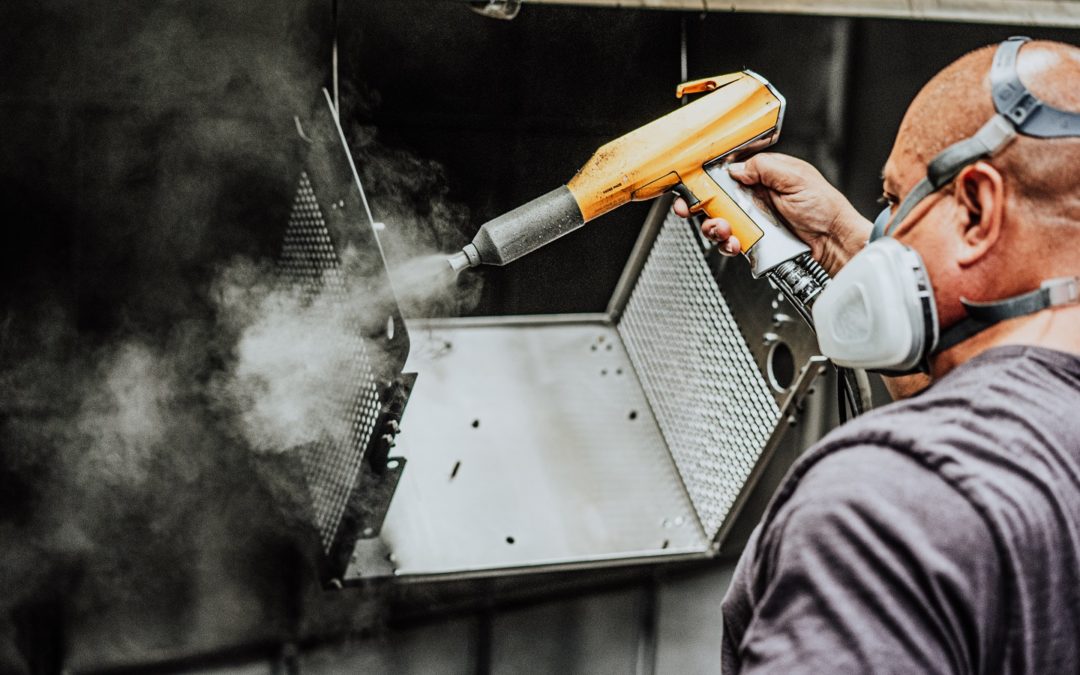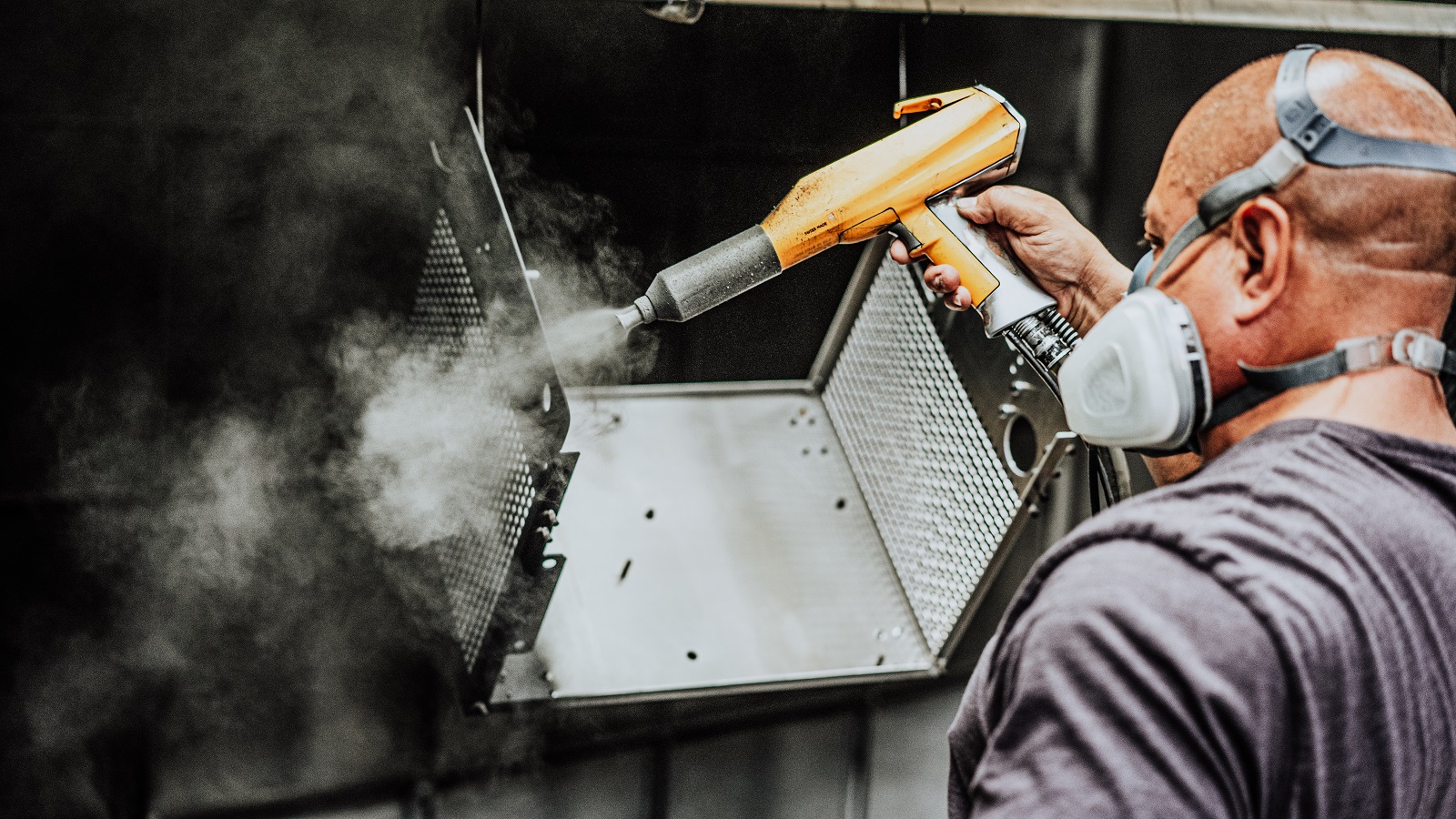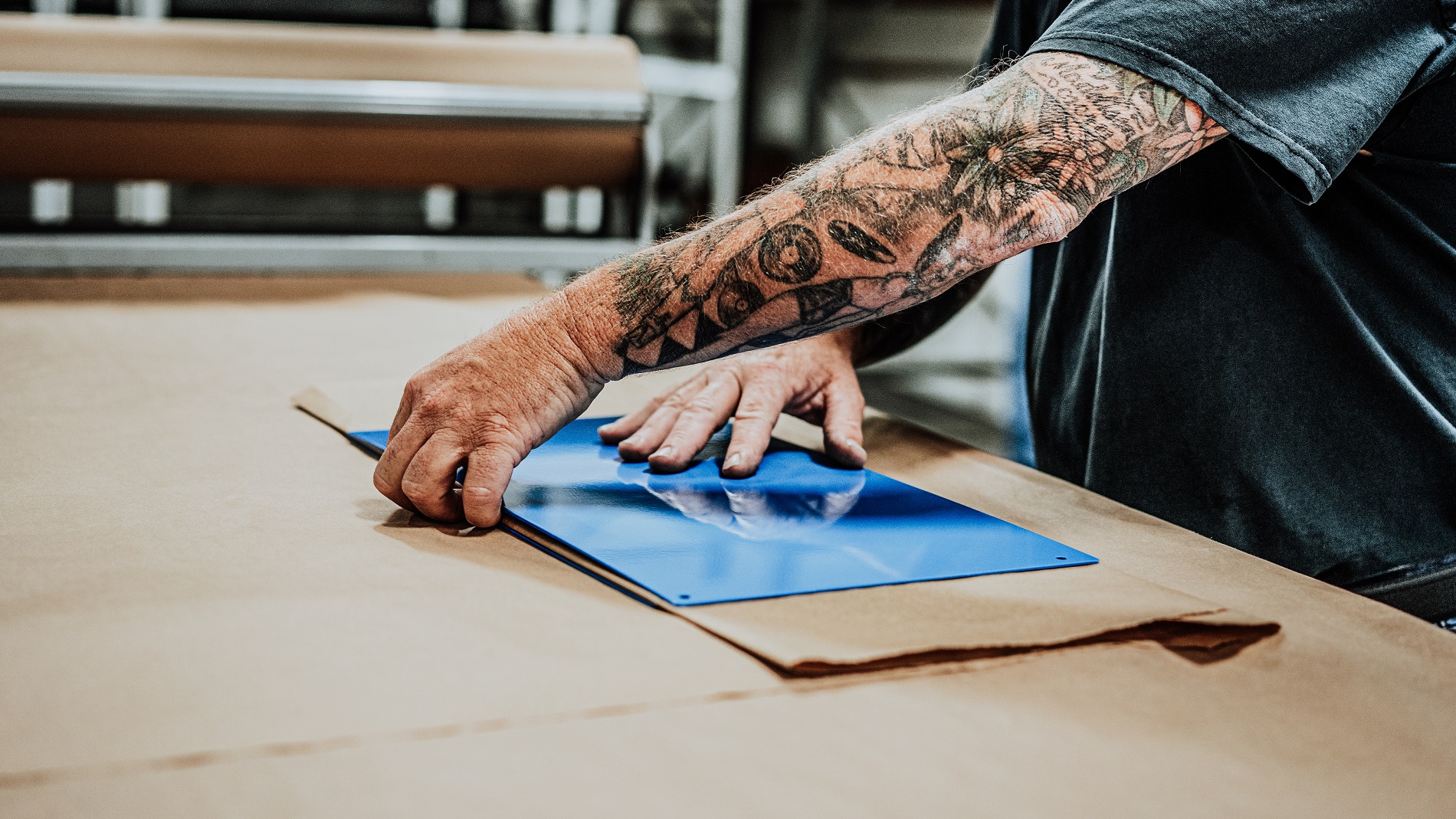The art of powder coating is a fairly straightforward concept. Dry powder is applied to a surface, melted, then allowed to cure into a protective coating. Powders can be either thermoplastic or thermoset (not to worry, we’ll get into more detail on this later). Unlike conventional liquid paints, powder coating is typically applied via electrostatic spray to an electrically grounded medium.
So why go through all the trouble of getting molecules to change polarity? Why not just break out a can of paint sitting in the garage and go to work with a brush or spray can? Well, for a few reasons…
Powder coating exhibits improved overall performance in comparison to wet paint—it is more resistant to chipping, scratching, weathering and other wear due to thermal bonding it undergoes during the curing process. In addition to its superior physical toughness and longevity, powder coating provides enhanced color retention and is significantly less harmful to the environment when compared to conventional liquid coatings.
Not all powders are created equal.
When working with commercial and architectural grade applications, or when you just want a finish that lasts, it is imperative to use the highest quality materials available. The American Architectural Manufacturers Association (AAMA) analyzes powder coating products, among other things, to provide architects and consumers with benchmarks for quality. Only select architectural grade powders meet the AAMA 2605 high performance specification— the highest standard available for organic coatings on architectural aluminum extrusions and panels.
But wait, there’s more…quite a bit more, actually.
Architectural powder coatings that meet the performance requirements of AAMA 2605 are comprised of two different resin types: PVDF resin (polyvinylidene difluoride) or FEVE resin (fluoroethylene vinyl ether).
Most of us within the industry are familiar with, or have heard of, PVDF based resins in both wet and powder forms. 70% PVDF fluoropolymer resins have been an industry standard for a long time, a really long time—over 50 years! PVDF resins are based on a traditional 2-coat system comprised of a primer coat and topcoat.
Progression of time and technology.
In the early 2000’s FEVE based resins began to emerge as an increasingly popular option for many commercial and architectural grade powder coating applications. Due to their unique chemical composition, FEVE based powders only require a single coat to provide the same (or better) performance as the old-school 2-coat PVDF system.
So, what are the differences, advantages, and weaknesses of each resin type from a more technical standpoint? Well, remember way back at the beginning of the article where we mentioned thermoplastic and thermoset? It starts there…
Thermoset vs. Thermoplastic
FEVE systems are thermoset. PVDF systems are thermoplastic.
Thermosetting (often called thermoset) FEVE resin is irreversibly hardened when cured. During the curing process, thermoset polymers create chemical bonds called cross-links that permanently alter the compound’s physical structure. This means once properly cured, the coating can no longer melt when exposed to heat, pressure or UV light. These unique thermosetting properties give FEVE resins superior physical and elemental toughness and improved scratch resistance.
On the other end of the spectrum, thermoplastic PVDF resin becomes soft when heated and hard when cooled. There is no cross-linking during the curing process. This means thermoplastic materials can be cooled and heated repeatedly without any change in their chemical or physical properties. The ability to remelt and reshape a compound can be useful in certain applications-and makes recycling more efficient. However, in architectural coating applications a more durable, less malleable finish is often superior.
Sustainability and efficiency.
When it comes to making environmentally conscious decisions, FEVE powders are the clear choice. They are solvent free, release no VOC’s upon application and do not require chrome-based pretreatment chemicals prevalent in PVDF based applications. In addition to protecting the environment directly, eliminating pesky base coats, toxic primers and solvents required for PVDF applications can also help save time and reduce energy consumption. Increased performance and less material– that’s something we can all get behind.
Let’s talk aesthetics
Both PVDF and FEVE based coatings provide long lasting, high performance color retention. There is, however, one major difference between the aesthetic nature of the two resin compounds. FEVE resins are able to showcase a broader gloss spectrum when compared to PVDF resins. PVDF resins naturally dull as they cure due to their chemically inherent matte-like finish. This typically results in medium to low gloss finish levels ranging from 10-35 according to ASTM D520. The molecular curing process of FEVE based resin exhibits no matting effect and can exhibit gloss levels from 25 (matte) to 75 (high gloss), giving a more dynamic choice in design and aesthetic versatility.
Here at CAPW, we pride ourselves on using the best materials available to produce high-end finishes and coatings. We’ve done the research and have decades of experience using different resin compositions and coating methods. Whenever possible we strive to use FEVE based resin coatings for our projects. We believe their versatility, durability, sustainability and aesthetic qualities make them the best choice for both our customers and our planet.
Download our Color Chart here.




